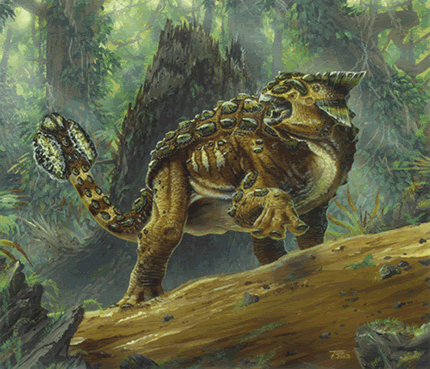 Horned Dinosaurs
Horned Dinosaurs
Speculation continues over the function of the wicked looking horns and grand neck frill of the larger ceratopsians such as Triceratops. Were they for protection, display or even to control body temperature? The earliest horned dinosaurs were quite small and got about on two legs. The four legged giants that characterise the group came later. Fossil evidence suggests horned dinosaurs originated in what's now Asia during the Cretaceous period, spreading out and thriving as herbivores. Many of the species are recognised from their skulls, which seem to be the part of a ceratopsian skeleton most likely to be preserved.
Ceratopsia or Ceratopia ( /ˌsɛrəˈtɒpsiə/ or /ˌsɛrəˈtoʊpiə/; Greek: "horned faces") is a group of herbivorous, beaked dinosaurs which thrived in what are now North America, Europe, and Asia, during the Cretaceous Period, although ancestral forms lived earlier, in the Jurassic. The earliest known ceratopsian, Yinlong downsi, lived between 161.2 and 155.7 million years ago. The last ceratopsian species became extinct in the Cretaceous–Paleogene extinction event, 65.5 million years ago.
Early members of the ceratopsian group, such as Psittacosaurus, were small and bipedal animals. Later members, including ceratopsids like Centrosaurus and Triceratops, became very large quadrupeds and developed elaborate facial horns and frills extending over the neck. While these frills might have served to protect the vulnerable neck from predators, they may also have been used for display, thermoregulation, the attachment of large neck and chewing muscles or some combination of the above. Ceratopsians ranged in size from 1 meter (3 ft) and 23 kilograms (50 lb) to over 9 meters (30 ft) and 5,400 kg (12,000 lb).
Triceratops are by far the best-known ceratopsians to the general public. It is traditional for ceratopsian genus names to end in "-ceratops", although this is not always the case. One of the first named genera was Ceratops itself, which lent its name to the group, although it is considered a nomen dubium today as its fossil remains have no distinguishing characteristics that are not also found in other ceratopsians.
Scientific name: Ceratopsia
Common names:horn face










![[image] [image]](http://i483.photobucket.com/albums/rr192/EternalPan/tarbosaurus_burian.jpg)









